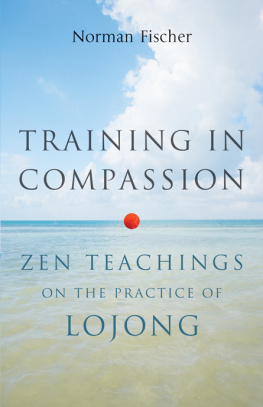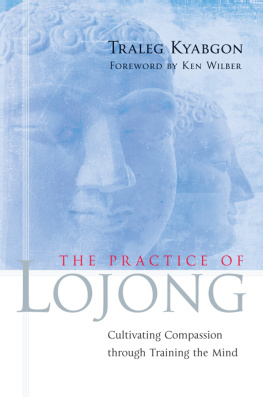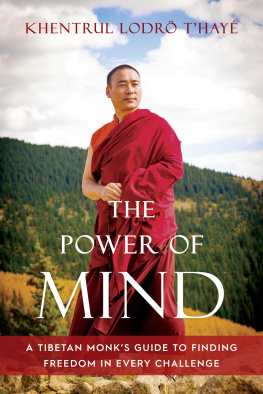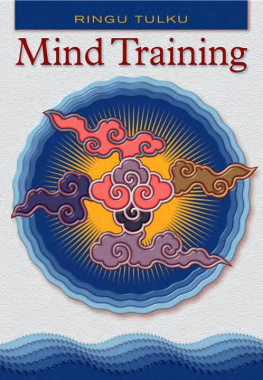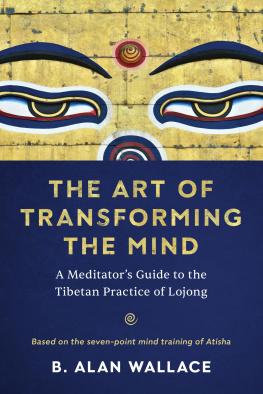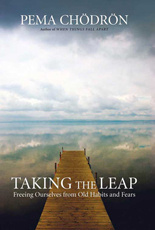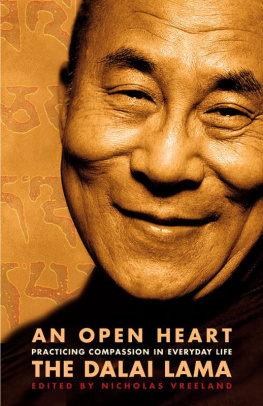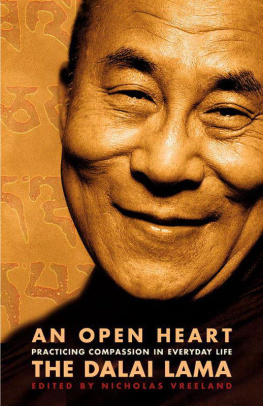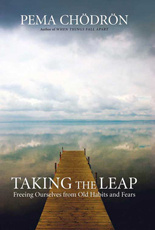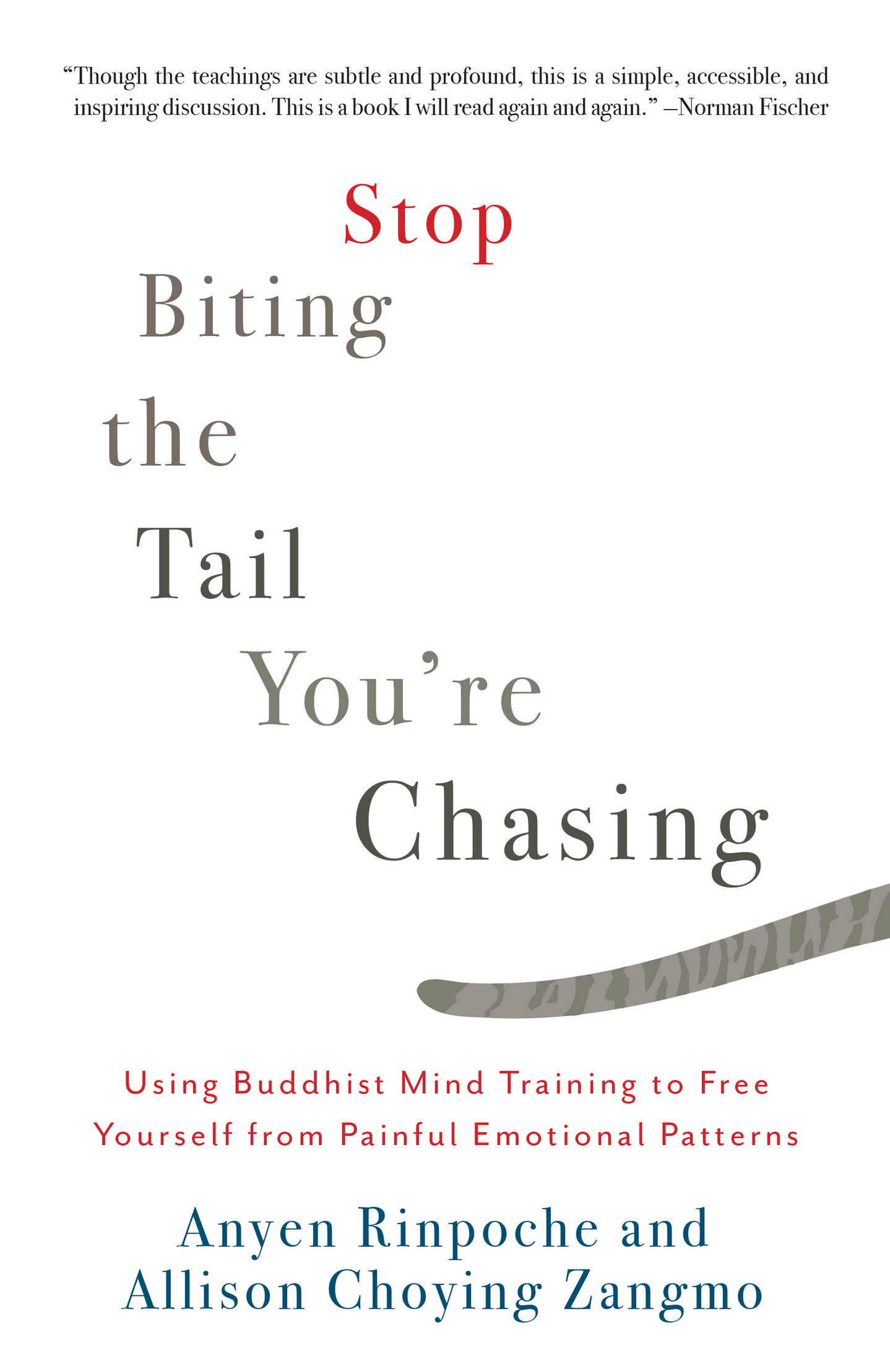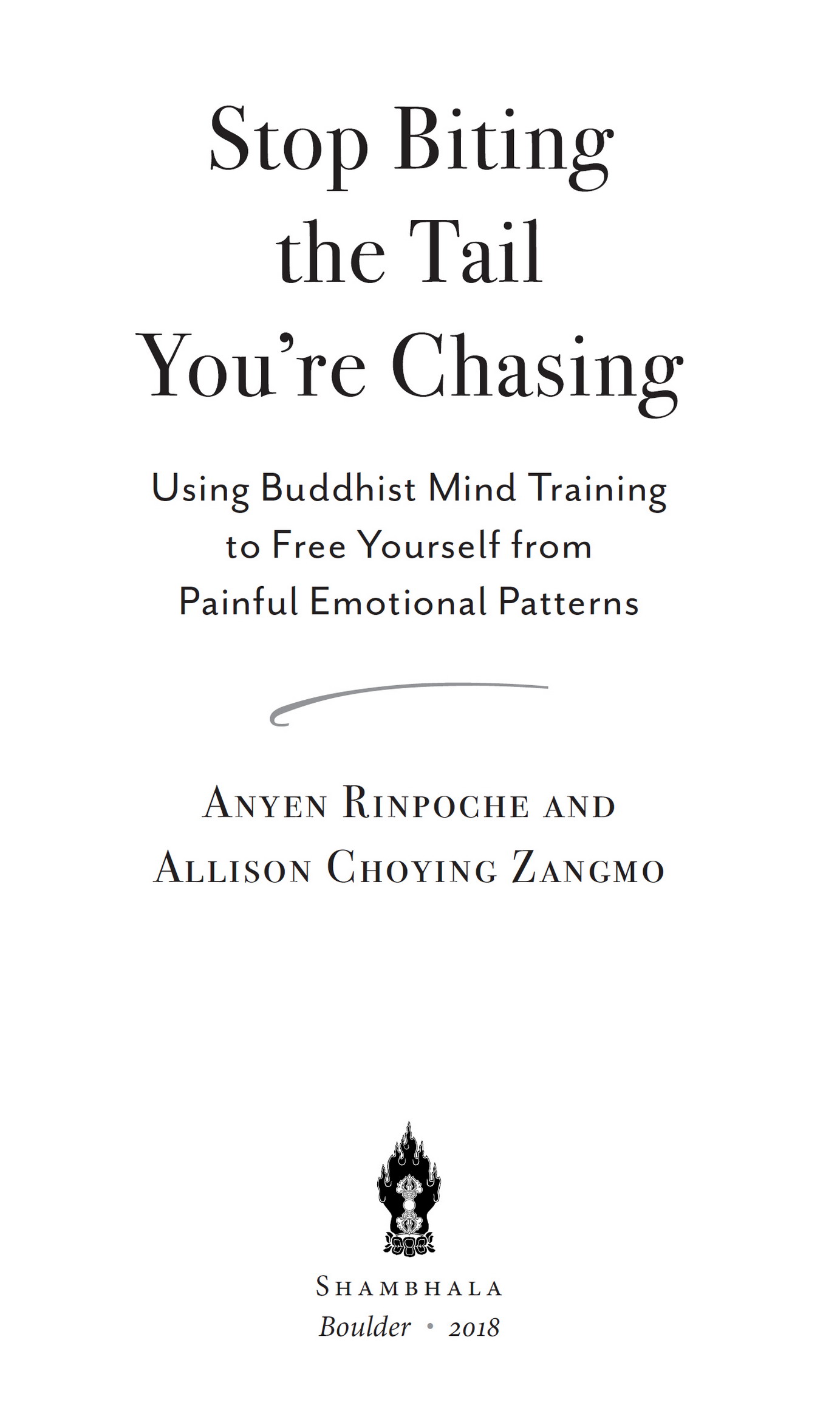Contents
The lojong teachings on working with destabilizing emotions are Tibets great gift to a world in desperate need of them. In Stop Biting the Tail Youre Chasing we hear the wise and patient voice of Anyen Rinpoche, fully immersed in these teachings as only a Tibetan tulku can be, along with his longtime collaborator, Allison Choying Zangmo, kindly speaking to us about how to apply this wisdom to our contemporary lives. Though the teachings are subtle and profound, this is a simple, accessible, and inspiring discussion. This is a book I will read again and again.
N ORMAN F ISCHER , poet, Zen priest, and co-author of What Is Zen?
There is no better way to bring intelligence, sanity, and love into the world than moving away from fixating on the self, and instead, working for the well-being of others. In Stop Biting the Tail Youre Chasing, Anyen Rinpoche and Allison Choying Zangmo present us with a fresh, insightful, and engaging look at the most essential, practical, and potent instructions on how to do just thatthe lojong or mind training teachings. I think you will find this book a great guide on how to move through the world with joy and grace.
E LIZABETH M ATTIS N AMGYAL , author of The Power of an Open Question
Stop Biting the Tail Youre Chasing interweaves timeless wisdom from the greatest masters in Mahayana Buddhism with both Anyen Rinpoches and Khandro Allison Choying Zangmos own experience and advice, allowing western, English readers the opportunity to access these teachings and apply them directly to their lives. We are grateful to them for these efforts and especially to Rinpoche for dedicating himself to this cause.
S ANGYE K HANDRO , Light of Berotsana, teacher and translator
This volume is a treasure of profound Buddhist teachings on the trainings of the mind, lojong, that transmute every moment of our lives into true sources of benefit to oneself and others. I pray that we may all put them into practice.
T ULKU T HONDUP , author of The Heart of Unconditional Love
A LSO BY A NYEN R INPOCHE
AND A LLISON C HOYING Z ANGMO
The Tibetan Yoga of Breath
A LSO BY A NYEN R INPOCHE
The Union of Dzogchen and Bodhichitta
Dying with Confidence
Journey to Certainty
Momentary Buddhism
Shambhala Publications, Inc.
4720 Walnut Street
Boulder, Colorado 80301
www.shambhala.com
2018 by Anyen Rinpoche and Allison Choying Zangmo
The Heart Sutra on is from The Heart Sutra: An Oral Teaching by Geshe Sonam Rinchen, translated and edited by Ruth Sonam (Boston: Snow Lion, 2003). Used by permission.
All rights reserved. No part of this book may be reproduced in any form or by any means, electronic or mechanical, including photocopying, recording, or by any information storage and retrieval system, without permission in writing from the publisher.
eBook design adapted from printed book design by Steve Dyer
Cover design by Jim Zaccaria
L IBRARY OF C ONGRESS C ATALOGING - IN -P UBLICATION D ATA
Names: Anyen, Rinpoche, author.
Title: Stop biting the tail youre chasing: using Buddhist mind training to free yourself from painful emotional patterns / Anyen Rinpoche and Allison Choying Zangmo.
Description: First Edition. | Boulder: Shambhala, 2018.
Identifiers: LCCN 2017049077 | ISBN 9781611805710 (pbk.: alk. paper)
eISBN9780834841635
Subjects: LCSH : Blo-sbyong. | EmotionsReligious aspectsBuddhism. Classification: LCC BQ 7805. A 59 2018 | DDC 294.3/444dc23 LC record available at https://lccn.loc.gov/2017049077
v5.3.1
a
Lord of Sages, Great Lifeforce of the doctrine of transmission and realization.
Seer of the ultimate essence, Treasury of the dharma of the Kama and Terma.
Holder of the saffron robes, and our supremely renowned, resplendent protector.
I pray to Thubten Chokyi Drakpa.
Composed by Alek Zenkar Rinpoche
Contents
Introduction
I F WE HAVE SPENT any time reading Buddhist texts, we may be tempted to approach Buddhism from a primarily intellectual standpoint. We may use it as a kind of philosophy that can help us make sense of our incredibly painful lives or as a fresh perspective on reality. But the amazing thing about the dharma is that it is inherently practical, deeply personal, and wholly applicable in the modern world. No matter what difficulties we face in our lives, the dharma can not only help us cope with them, but it can also help us find the richness in those difficult circumstances. It can help us awaken to further possibilities and experience life as a wish-fulfilling gem.
Engaging in the practice of Buddhism demands that we work very directly with our emotions. It requires broad and exacting self-examination and the willingness to chip away at the habits we have formed that perpetuate suffering in ourselves and others. The Buddhist tradition calls this practical, transformative style of practice lojong, or mind training. Mind training is an extremely effective style of practice passed down from many of the great Kadampa and bodhisattva masters of old, such as Jowo Je Atisha and Shantideva. As well learn in the chapters that follow, these masters took very deliberate, specific actions to train themselves not to engage in painful emotional habits, to increase their compassion for others, and to let go of their own self-cherishing.
As the dharma has been passed from Tibet to the West over the past several decades, lojong has been introduced by different spiritual masters, often as a set of slogans that can be used to kindle mindfulness. While these slogans are part of the tradition of lojong, mind training is actually a vast topic. In fact, which of the teachings in the entirety of Buddhism could be excluded from lojong? All of Buddhism is mind training, as Buddhism has no goal other than personal transformation, growth, and ultimately liberation and the cessation of suffering for ourselves and others.
This book is meant to provide a set of tools that you can apply in daily life to gradually relieve your own suffering and extend that relief to others. It is our greatest hope that you pick up these tools, experiment with them, and continually use the ones that work. With gentle and consistent effort, we are all capable of experiencing the joy and happiness that result from liberating ourselves from the torrent of emotional conflict. That freedom, in turn, can naturally be shared and enjoyed by the beings we encounter each and every day.
1

The Emotions as Friends and Enemies
A RE THE EMOTIONS our best friends or our worst enemies? Most of the time, we are not sure. In Western culture, we are generally taught, either directly or by example, to dive into the emotions or go to battle with them. We see people in the world around us relating to their emotions in one of these two extreme approachessometimes even both at once. Many of us choose one approach or the other, or wind up somewhere in between.


